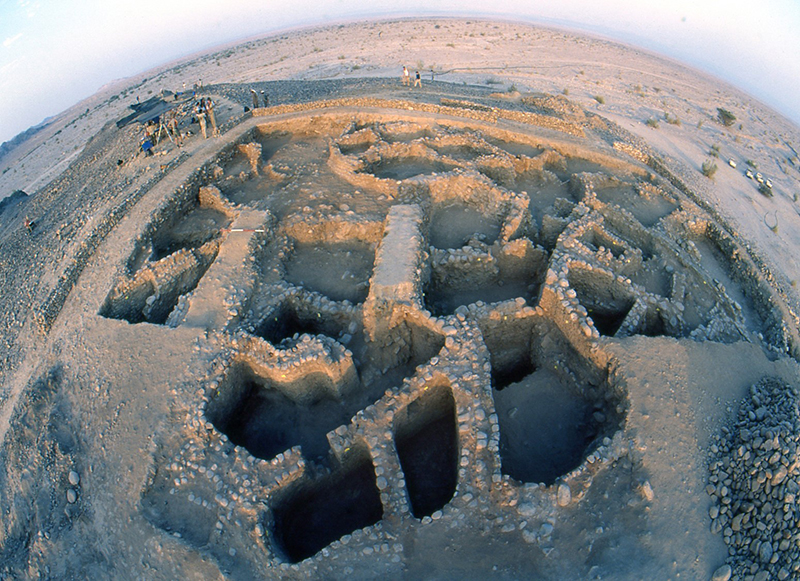The strength and direction of Earth's magnetic field has changed a lot over the millennia. Scientists are eager to study its past patterns to work out how the field might change in the future – a pretty vital research field, considering this magnetic shield protects us from damaging cosmic radiation.
However, instruments capable of directly measuring Earth's magnetic field have only been around for roughly 200 years. So, we have to turn to other methods to track it further back in time – including, in a new study, artifacts recovered from a site in Jordan, dated to around 8,000-10,000 years ago (the Neolithic or New Stone Age).
These items – including ceramic pottery and burnt flints used to make other tools - are special because their creation involved subjecting them to extremely high temperatures.
That heating process and subsequent cooling caused certain minerals and crystals within the artifacts to trap a 'frozen' record of what Earth's magnetic field was like at the time, a phenomenon known as residual or remanent magnetization.
"This is the first time that burnt flints from prehistoric sites are being used to reconstruct the magnetic field from their time period," says archaeologist Erez Ben-Yosef from Tel Aviv University in Israel.
"Working with this material extends the research possibilities tens of thousands of years back, as humans used flint tools for a very long period of time prior to the invention of ceramics."
 The excavation site in Jordan. (Thomas E. Levy)
The excavation site in Jordan. (Thomas E. Levy)
The researchers looked at 129 different items in total, building on previous work that assessed the viability of using flint fragments as a guide to magnetic field strength – something that is going to be incredibly useful for future studies.
What the team found was a drop in the strength of the magnetic field during the time the artifacts were in use, followed by a recovery across the course of a few hundred years (not long at all in the grand scheme of the planet's history).
With Earth's magnetic field currently getting weaker over time – a potential source of concern – it's helpful to know that this has happened before, and doesn't necessarily mean our protective bubble is going to vanish in the next few centuries.
"The findings of our study can be reassuring: this has already happened in the past," says geophysicist Lisa Tauxe from the Scripps Institution of Oceanography.
"Approximately 7,600 years ago, the strength of the magnetic field was even lower than today, but within approximately 600 years, it gained strength and again rose to high levels."
It's thought that our planet's magnetic field is generated by the convection currents created as molten iron and nickel circulate in Earth's outer core, some 3,000 kilometers (1,864 miles) underground – but there's not much else that we're sure about.
Some of the unanswered questions about this great phenomenon focus on how exactly the magnetic field might be connected to processes in the atmosphere and the changing climate of Earth, and how they influence each other.
And while geological studies allow us to go back further in terms of tracking shifts in Earth's magnetism, they don't offer the precision in terms of timing that archaeological analysis does – as this latest study demonstrates.
"The magnetic field's essence and origins have remained largely unresolved. In our research, we sought to open a peephole into this great riddle," says Ben-Yosef.
The research has been published in PNAS.
#Nature | https://sciencespies.com/nature/scientists-have-measured-earths-ancient-magnetic-field-from-stone-age-artifacts/
No comments:
Post a Comment